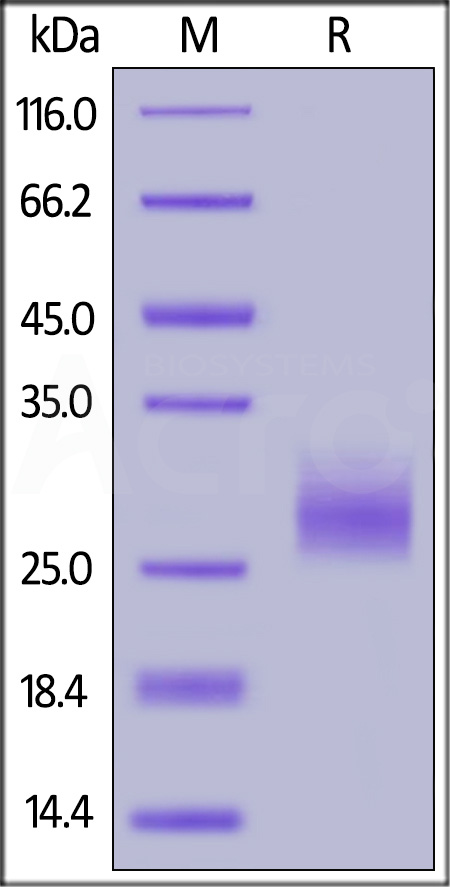Mechanistic role of FN1 in LAIR-1 mediated downregulation of ovarian cancer cell proliferationZhang, Liu, Zhong
et alBMC Cancer (2025) 25 (1), 339
Abstract: RNA-seq was used to explore the potential mechanism underlying human leukocyte-associated immunoglobulin-like receptor 1 (LAIR-1) inhibition of the proliferation and migration of ovarian cancer cells.A LAIR-1-overexpression cell model was established using a LAIR-1-lentivirus. After confirming and identifying the LAIR-1 expression cell clones by flow cytometry and RT-qPCR, the proliferation and migration of the cells were examined by CCK8 and scratch assays, and the differentially expressed genes (DEGs) were searched by RNA-seq and analyzed by GO and KEGG enrichment. String was used for protein interaction network analysis, and Cytoscape was used to identify key proteins.LAIR-1 inhibited the proliferation and migration of ovarian cancer cells. LAIR-1 expression caused the upregulation of 83 genes and the downregulation of 80 genes. Among the DEGs, fibronectin 1 (FN1) was a key protein affecting the downstream FAK-MEK-ERK axis. KEGG enrichment analysis identified the MAPK pathway as the most obvious enrichment pathway, followed by PI3K-AKT pathway.LAIR-1 downregulates FN1 to inhibit the FAK-MEK-ERK axis, as well as the proliferation and migration of ovarian cancer cells.© 2025. The Author(s).
Collagen remodeling-mediated signaling pathways and their impact on tumor therapyYuan, Lin, Wang
et alJ Biol Chem (2025) 301 (3), 108330
Abstract: In addition to their traditional roles in maintaining tissue morphology and organ development, emerging evidence suggests that collagen (COL) remodeling-referring to dynamic changes in the quantity, stiffness, arrangements, cleavage states, and homo-/hetero-trimerization of COLs-serves as a key signaling mechanism that governs tumor growth and metastasis. COL receptors act as switches, linking various forms of COL remodeling to different cell types during cancer progression, including cancer cells, immune cells, and cancer-associated fibroblasts. In this review, we summarize recent findings on the signaling pathways mediated by COL arrangement, cleavage, and trimerization states (both homo- and hetero-), as well as the roles of the primary COL receptors-integrin, DDR1/2, LAIR-1/2, MRC2, and GPVI-in cancer progression. We also discuss the latest therapeutic strategies targeting COL fragments, cancer-associated fibroblasts, and COL receptors, including integrins, DDR1/2, and LAIR1/2. Understanding the pathways modulated by COL remodeling and COL receptors in various pathological contexts will pave the way for developing new precision therapies.Copyright © 2025 The Authors. Published by Elsevier Inc. All rights reserved.
Polymerized Type I Collagen Downregulates STAT-1 Phosphorylation Through Engagement with LAIR-1 in Circulating Monocytes, Avoiding Long COVIDOlivares-Martínez, Hernández-Ramírez, Núñez-Álvarez
et alInt J Mol Sci (2025) 26 (3)
Abstract: The intramuscular administration of polymerized type I collagen (PTIC) for adult symptomatic COVID-19 outpatients downregulated hyperinflammation and improved symptoms. We inferred that LAIR1 is a potential receptor for PTIC. Thus, a binding assay and surface plasmon resonance binding assay were performed to estimate the affinity of the interaction between LAIR1 and PTIC. M1 macrophages derived from THP-1 cells were cultured with 2-10% PTIC for 24 h. Lysates from PTIC-treated THP-1 cells, macrophage-like cells (MLCs), M1, M1 + IFN-γ, and M1 + LPS were analyzed by Western blot for NF-κB (p65), p38, STAT1, and pSTAT1 (tyrosine701). Serum cytokine levels and monocyte LAIR1 expressions (Mo1 and Mo2) were analyzed by luminometry and flow cytometry in symptomatic COVID-19 outpatients on PTIC treatment. PTIC-bound LAIR1 had a similar affinity to collagen in M1 macrophages. It downregulated pSTAT1 in IFN-γ-induced M1. COVID-19 patients under PTIC treatment showed a significant decrease in Mo1 percentages and cytokines (IP-10/MIF/eotaxin/IL-8/IL-1RA/M-CSF) associated with STAT1 and an increase in the Mo2 subset. The inflammatory mediators and Mo1 downregulation were related to better oxygen saturation and decreased dyspnea, chest pain, cough, and chronic fatigue syndrome in the acute and long-term phase of infection. PTIC is an agonist of LAIR1 and downregulates STAT-1 phosphorylation. PTIC could be relevant for treating STAT1-mediated inflammatory diseases, including COVID-19 and long COVID.
Subtype-specific analysis of gene co-expression networks and immune cell profiling reveals high grade serous ovarian cancer subtype linkage to variable immune microenvironmentCarey, Young, Clark
et alJ Ovarian Res (2024) 17 (1), 240
Abstract: High-grade serous ovarian cancer (HGSOC) is marked by significant molecular diversity, presenting a major clinical challenge due to its aggressive nature and poor prognosis. This study aims to deepen the understanding of HGSOC by characterizing mRNA subtypes and examining their immune microenvironment (TIME) and its role in disease progression. Using transcriptomic data and an advanced computational pipeline, we investigated four mRNA subtypes: immunoreactive, differentiated, proliferative, and mesenchymal, each associated with distinct gene expression profiles and clinical behaviors. We performed differential expression analysis among mRNA subtypes using DESeq2 and conducted Weighted Gene Co-Expression Network Analysis (WGCNA) to identify co-expressed gene modules related to clinical traits, e.g., age, survival, and subtype classification. Gene Ontology (GO) analysis highlighted key pathways involved in tumor progression and immune evasion. Additionally, we utilized TIMER 2.0 to assess immune cell infiltration across different HGSOC subtypes, providing insights into the interplay between tumor immune microenvironment (TIME). Our findings show that the immunoreactive subtype, particularly the M3 module-associated network, was marked by high immune cell infiltration, including M1 (p < 0.0001) and M2 macrophages (p < 0.01), and Th1 cells (p < 0.01) along with LAIR-1 expression (p = 1.63e-101). The M18 module exhibited strong B cell signatures (p = 6.24e-28), along with significant FCRL5 (adj. p = 3.09e-30) and IRF4 (adj. p = 3.09e-30) coexpression. In contrast, the M5 module was significantly associated with the mesenchymal subtype, along with fibroblasts (p < 0.0001). The proliferative subtype was characterized by M15 module-driven cellular growth and proliferation gene expression signatures, along with significant ovarian stromal cell involvement (p < 0.0001). Our study reveals the complex interplay between mRNA subtypes and suggests genes contributing to molecular subtypes, underscoring the important clinical implications of mRNA subtyping in HGSOC.© 2024. The Author(s).


 +添加评论
+添加评论























































 膜杰作
膜杰作 Star Staining
Star Staining
















